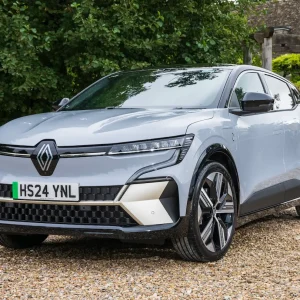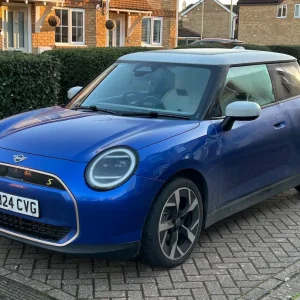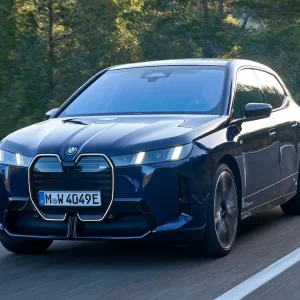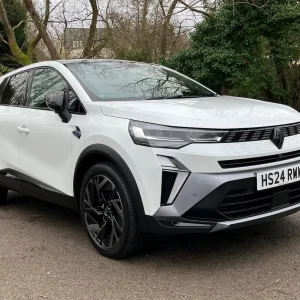No, your eyes are not deceiving you, this is another first drive for Hyundai’s new Ioniq 6, but in our defence, the last first drive was of a pre-production car – which having driven this production UK-spec Ultimate range-topper, wasn’t really representative of how Hyundai’s latest EV would drive on UK roads.
Outside, the only obvious difference we could spot over the car we drove
back in January is the optional digital side mirrors at £995. We’d do without them, although they work better with the Ioniq 6’s ‘streamliner’ design than the edgy and retro 5 and other high-end EV rivals.
From the faired-in headlights, deep front air dam with silver edging, to the ‘6’s silhouette, which is lower and more tapered from the side, with the same flush door handles, to the arch-filling standard 20in alloy wheels – the Ioniq 6 is attractive and distinctive in equal measure.
Most distinctive from the back, its raked style, with not one, but two rear spoilers, a clear light bar stretching across the rear and more silver detailing for the rear apron – it looks far more exotic than its Hyundai badging would suggest.
Inside the Ioniq 6, where there was smooth plastic on the car we last drove, there is now texture. We still wish the driver’s seat dropped lower, but the feel is refreshingly different to the Ioniq 5. The only things that have remained the same are the switchgear and infotainment screens, which are largely in the same place as the Ioniq 5. On our test car, the new winged dashboard has gained two screens on both sides for the optional digital side mirrors – still at least they seem to be at the right level and not set too low. Elsewhere, there’s a full-length centre console, and door cards that look like ripples on water. Then, there’s the four lights in the steering wheel horn push, rather than Ioniq badging, which indicate the state of the battery, and changes colour according to
drive mode.
Taller passengers might moan about the curvy styling meaning heads will be rubbing the headlining. Still, like the Ioniq 5, the legroom impresses. The 401-litre boot is a good size and deep, but its practicality is hindered by the high loading lip and smaller opening.
Last time we drove the 225hp and 350Nm rear drive version, but this time we have the 325hp and 605Nm all-wheel drive version. All have the same E-GMP platform as the Ioniq 5, but both have a larger 77kWh battery and standard 800V charging, meaning 350kW ultra-fast charging compatibility and a standard battery heating system to optimise charging times.
The two-wheel drive version is the Ioniq 6 to choose for the most range, with 338 miles. The all-wheel drive version has a more moderate range of 275 miles, which we’d estimate is more like 250 miles in everyday use.
With all-wheel drive and over 300hp, this Ioniq 6’s 5.1-second acceleration feels very quick off the mark. More interesting, though, considering how stiff the car we drove back in January was, is how much more complaint the ride was on this version of the car. As such, this Ioniq 6 was much more comfortable to drive and generally felt much
happier at low speeds – although there was still a little stiffness caused by those 20in alloy wheels.
Elsewhere, the steering remains reasonably sharp and despite the considerable weight, it handles well and is surprisingly involving.
The Ioniq 6 is not a cheap option, but very likeable in range-topping all-wheel drive form. We look forward to driving the more fleet-friendly single motor, 225hp version of the car.
Hyundai Ioniq 6 AWD Ultimate
P11D: £53,985
Residual value: 44.91%
Depreciation: £29,739
Fuel: £4,409
Service, maintenance and repair: £2,222
Cost per mile: 60.61p
Range: 275 miles
CO2 (BIK %): 0g/km (2%)
BIK 20/40% a month: £17/£35
Luggage capacity: 401 litres
Battery size/power: 77kWh/325hp





